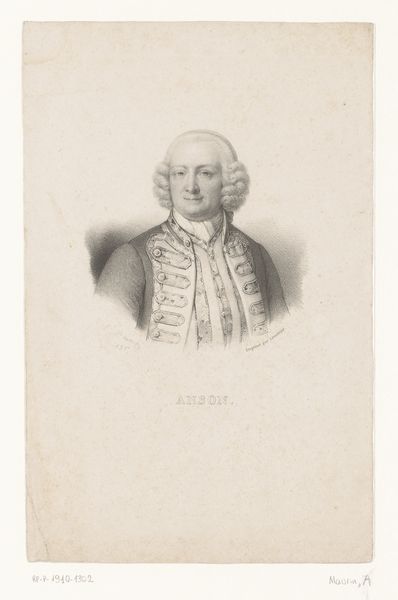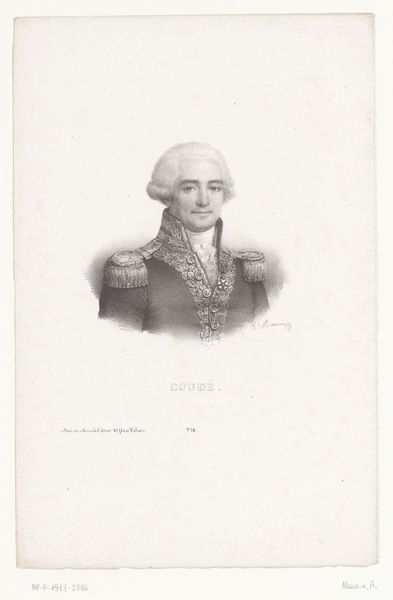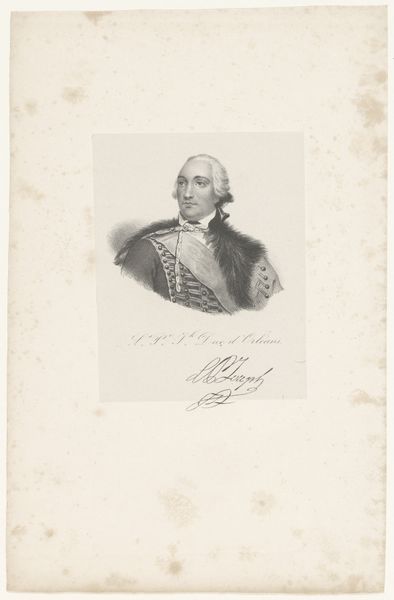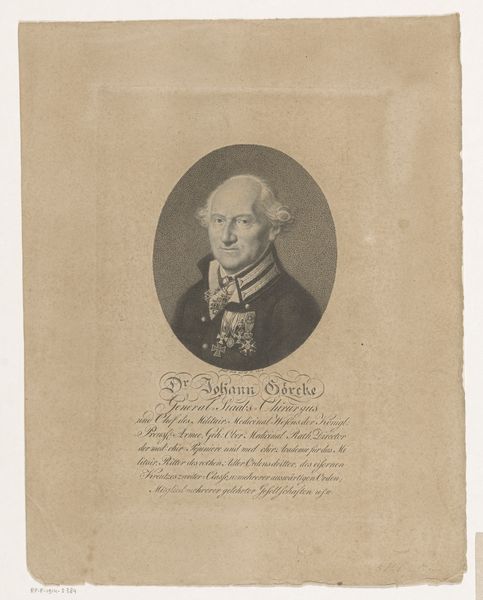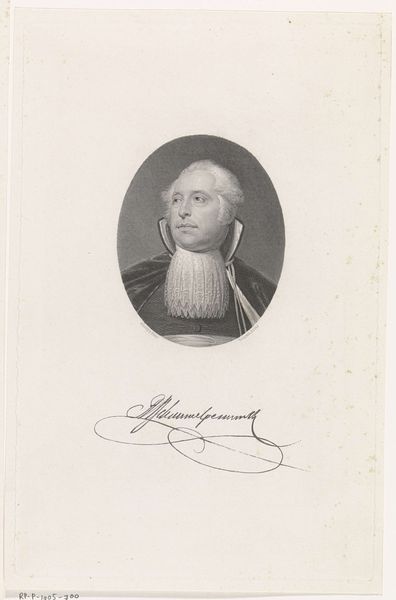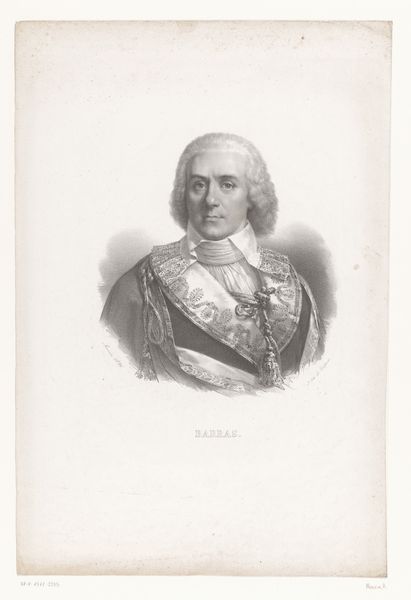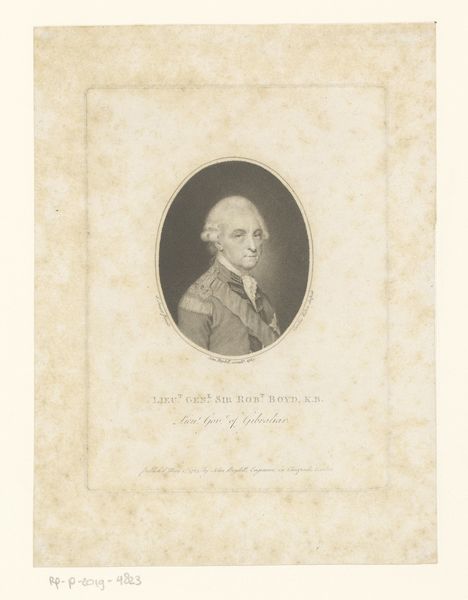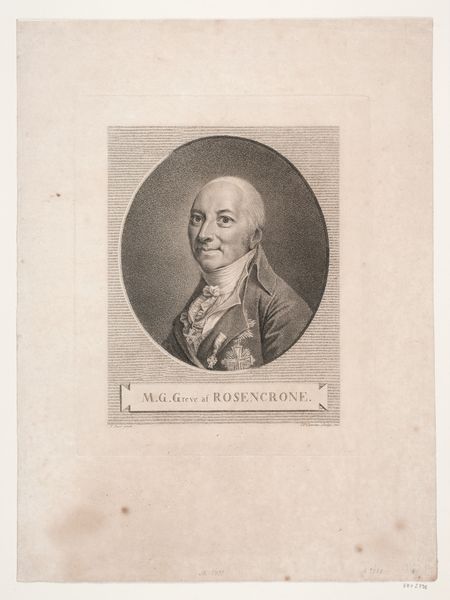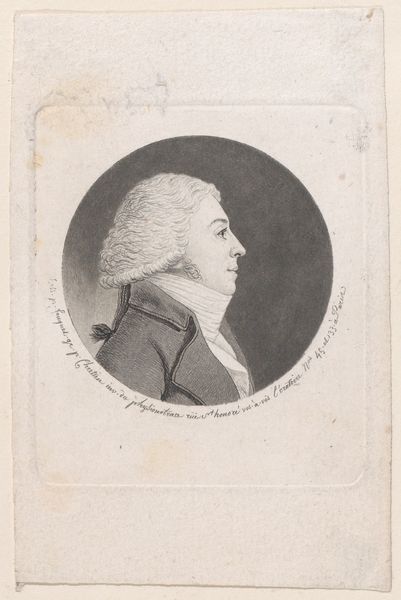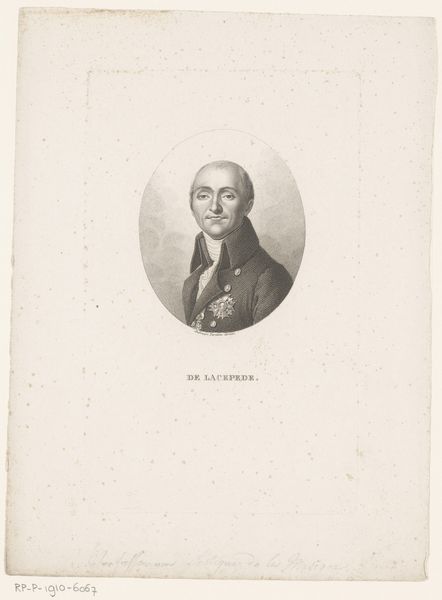
drawing, print, pencil, engraving
#
portrait
#
pencil drawn
#
drawing
#
neoclacissism
# print
#
pencil drawing
#
pencil
#
history-painting
#
engraving
Dimensions: height 273 mm, width 179 mm
Copyright: Rijks Museum: Open Domain
Curator: This is a portrait of Théophile Corret de la Tour d'Auvergne. It's attributed to Nicolas Maurin and believed to have been created sometime between 1825 and 1842. The medium involves engraving and pencil work. Editor: My first thought is the starkness. The monochrome palette, combined with the intense gaze of the subject, creates a sense of stoic determination. Curator: It’s interesting you mention the “intense gaze," because I think Maurin is deliberately presenting La Tour d'Auvergne in a particular light. As a figure celebrated during the French Revolution and later by Napoleon, portraying him with this firmness was politically strategic, solidifying his image as a patriotic hero. Editor: Agreed. Formally speaking, note the expert use of hatching and stippling to model the face and suggest the textures of his coat and powdered wig. The engraver masterfully manipulates light and shadow to convey depth and volume. It gives the portrait a compelling, three-dimensional quality. Curator: Precisely. This echoes the neoclassical ideals popular at the time, aiming for a heroic representation that reinforces the virtues associated with figures like La Tour d'Auvergne. The printing medium would ensure a wider distribution of these ideals. Editor: I'm drawn to the minimal background. The figure commands the viewer's attention, stripped away of any distracting detail. The eye is left to focus on the intricate detail of his face, those details of his clothing, the rendering that tells all the story. Curator: Which ultimately reinforces the notion of La Tour d'Auvergne as a symbol, rather than just an individual. He represents a specific set of values at a crucial juncture in French history, and Maurin's work captures that sentiment for a broader audience. And even today, the echoes are relevant in national identity discourses. Editor: I see how the work achieves this striking visual presence using careful artistic choices in its tonality and detail. It seems to embody both the likeness and the intended ideological reading of a hero of that time. Curator: The portrait becomes more than just an image of a man. It’s a symbol of a movement, an era, and ongoing historical interpretations.
Comments
No comments
Be the first to comment and join the conversation on the ultimate creative platform.

